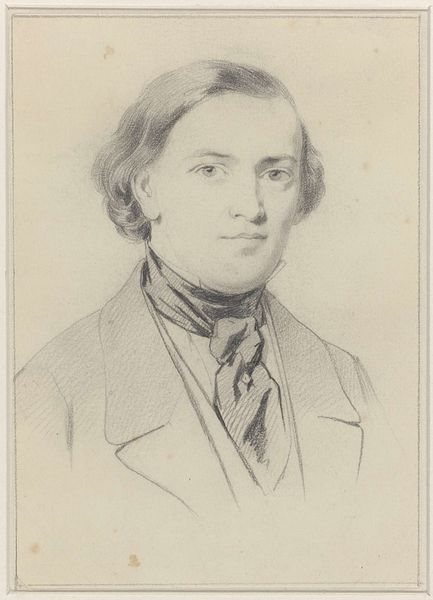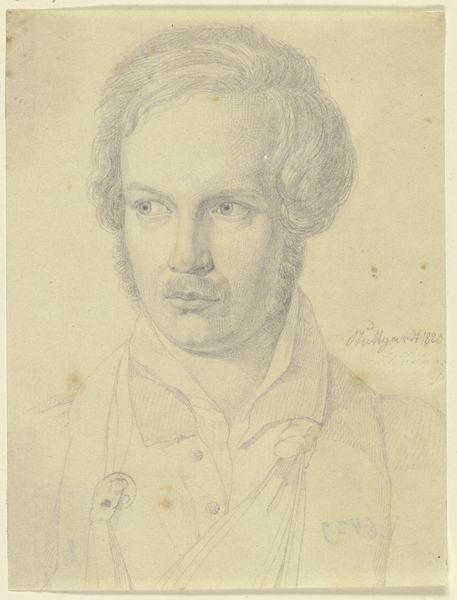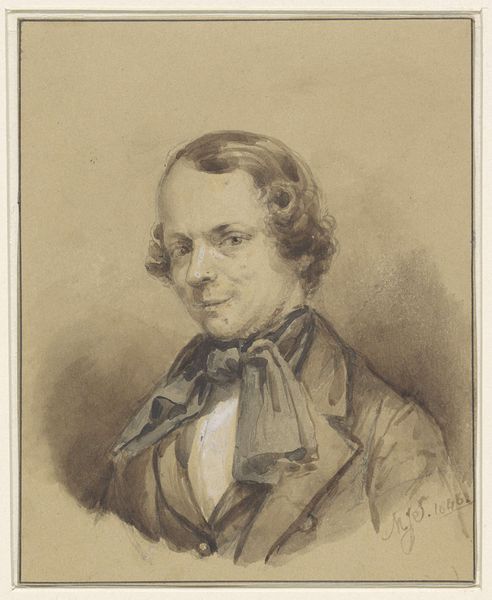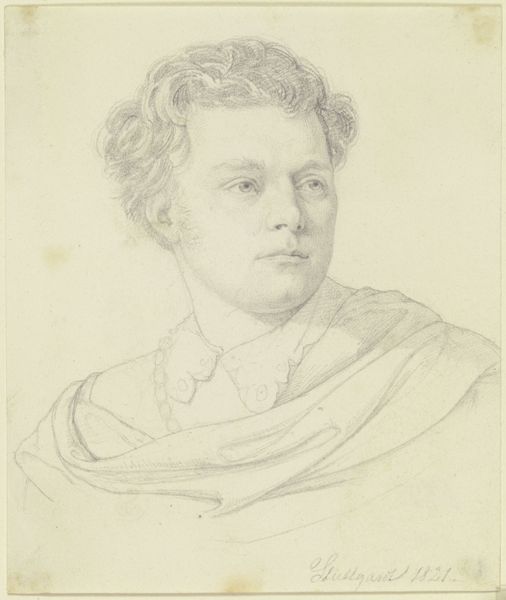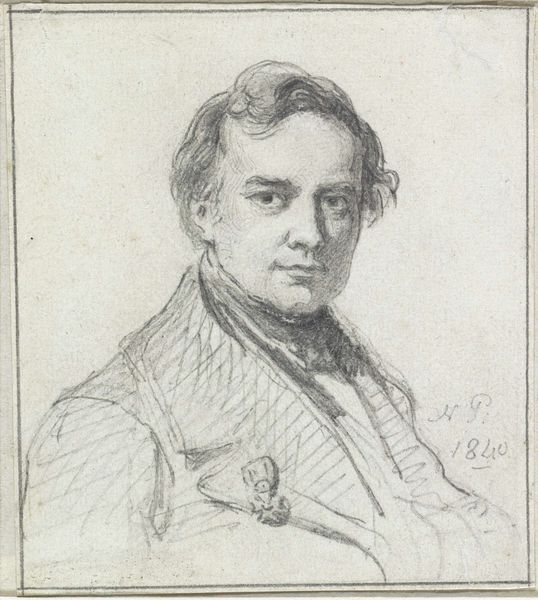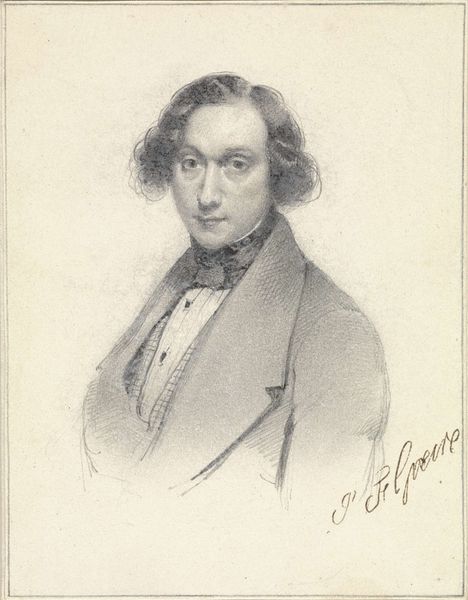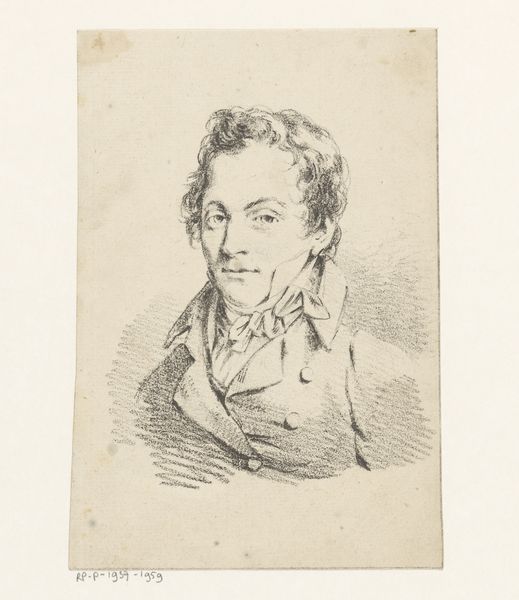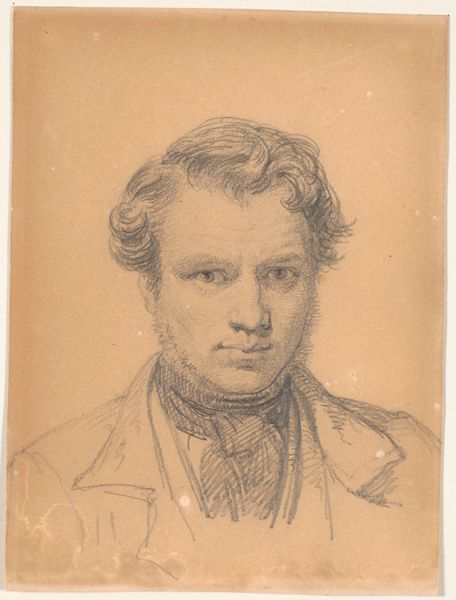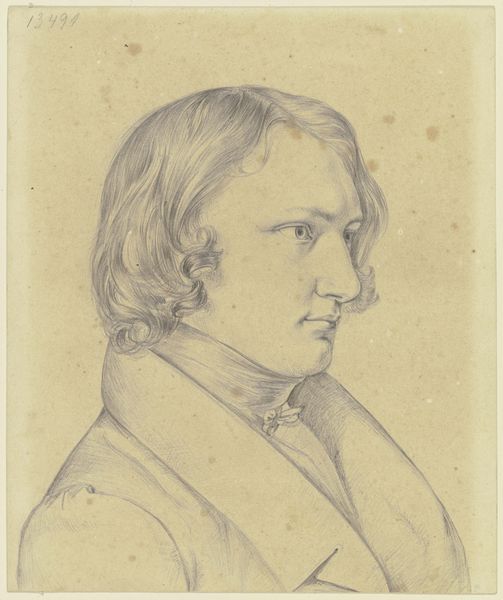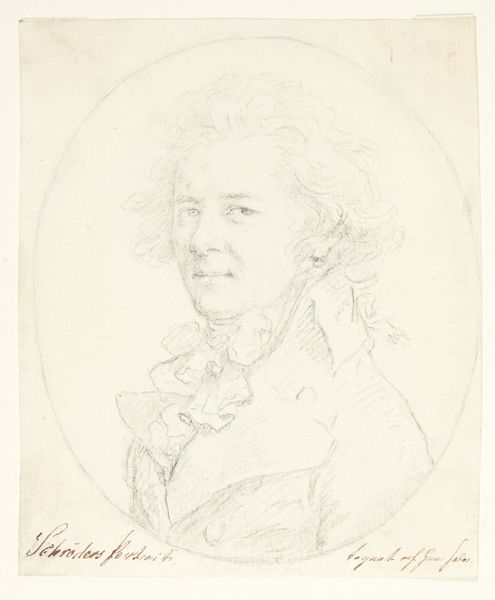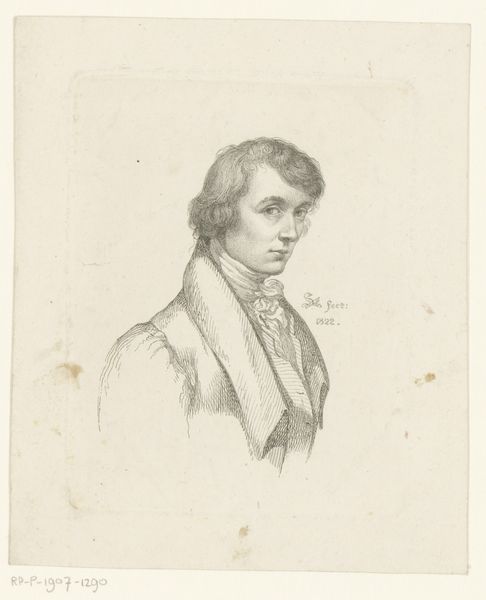
drawing, pencil
#
portrait
#
pencil drawn
#
drawing
#
facial expression drawing
#
16_19th-century
#
pencil sketch
#
portrait reference
#
german
#
pencil drawing
#
romanticism
#
pencil
#
animal drawing portrait
#
portrait drawing
#
pencil work
#
portrait art
#
fine art portrait
Copyright: Public Domain
Nikolaus Hoff created this portrait of the Stuttgart Court Opera singer Bezold in 1822 using graphite on paper. The use of graphite allows for delicate, controlled lines, capturing Bezold's likeness with precision. The subtle gradations of tone suggest Hoff was deeply familiar with the capabilities of his medium, and skilled in controlling the pressure and direction of his strokes to create volume and depth. Hoff's choice of graphite, a relatively accessible material, speaks to the changing landscape of art production in the 19th century. Unlike the labor-intensive methods of oil painting or sculpture, graphite drawings could be produced more quickly and efficiently. This reflects a broader shift towards the accessibility of art and the rise of a middle-class audience. Looking at this drawing through the lens of material and process, we can appreciate how Hoff’s skills and the inherent qualities of graphite contribute to the artwork’s cultural significance. It invites us to consider the social and economic factors that shaped artistic production in the 19th century.
Comments
No comments
Be the first to comment and join the conversation on the ultimate creative platform.
